Do you have an emergency survival kit?
If not, you should consider creating one. A bug-out bag, also known as a 72-hour kit, is a must-have for anyone who wants to be prepared for any emergency.
Whether you’re stranded in the middle of nowhere or stuck at home during a natural disaster, your bug-out bag will help see you through!
In this blog post, we’ll discuss what you need to include in your emergency survival kit and everything there is to know about it.
- What Is an Emergency Survival Kit, and Why Keep One?
- How To Choose the Right Backpack and Supplies for Your Needs
- What To Include in Your Emergency Survival Kit
- Basics To Include in Your Disaster-Ready Kit
- Don’t Forget Your Identifications
- Where To Store Your Bag
- What To Do If You Have To Evacuate in a Hurry
- Tips for Staying Safe and Prepared in Any Situation
- Recommended Emergency Survival Kits
- Never Get Caught Off Guard
- Questions You May Have
This page contains affiliate links. This means that if you click a link and buy one of the products on this page, I may receive a commission (at no extra cost to you!)
What Is an Emergency Survival Kit, and Why Keep One?
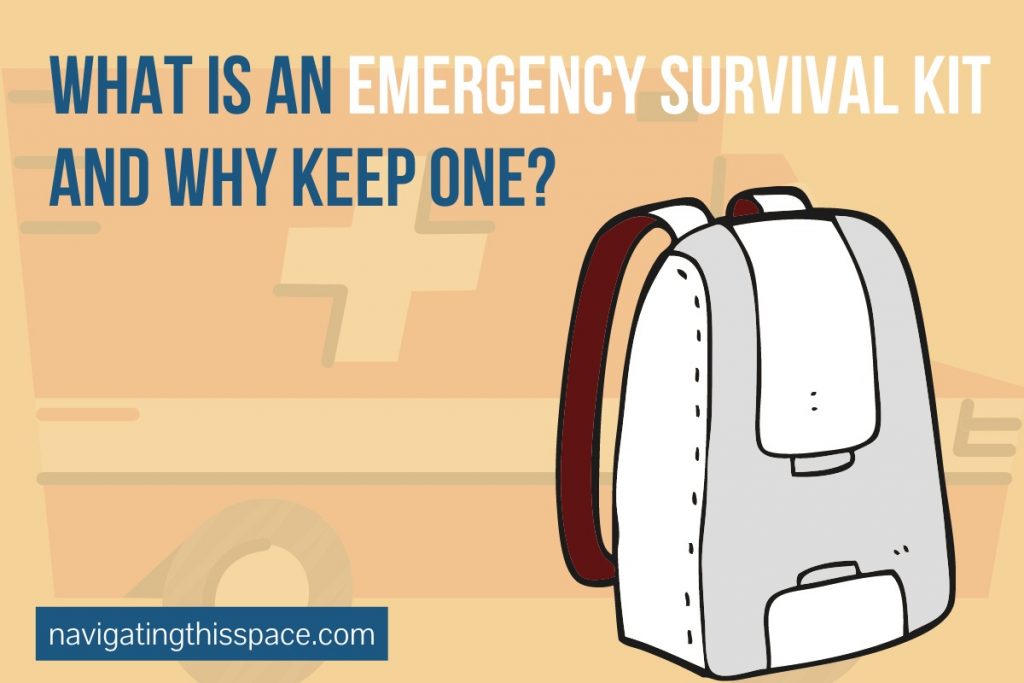
An emergency survival kit is a collection of essential supplies and tools that can be used in a natural disaster or another emergency.
A typical kit includes items, such as food, water, first-aid supplies, and a flashlight. The contents of a survival kit will vary depending on the particular emergency and the environment in which it is used. Still, all kits should be designed to help people survive until help arrives.
There are many reasons why keeping an emergency survival kit on hand is important.
- First, a kit can provide vital supplies and assistance in an emergency.
- Second, a kit can help people stay calm and focused during a crisis.
- And finally, a well-prepared kit can mean the difference between life and death in a truly dire situation. For all these reasons, everyone must have an emergency survival kit close at hand.
I remember the next-door apartment in the building I resided at the time caught on fire. My grandmother was home when the fire started, and she panicked because it was a huge building and the possibility of the entire building burning to the ground was very real in her head. In her panicked state, she ran to her bedroom, grabbed two underwear, stuffed them into her pocket, and ran outside.
That’s it. That’s all she brought with her. She didn’t think to grab her passport, any other identification, money, or any of her medications.
That event made me realize that it was essential for everyone to have an emergency kit prepared and packed. So that in the event of an emergency, all they’d need to do is grab their bag and go.
How To Choose the Right Backpack and Supplies for Your Needs

When choosing a backpack to use as your bug-out bag, it is important to select one that is comfortable and lightweight.
You will likely be carrying your bag for long periods, so choosing a backpack that will not cause you pain or fatigue is important.
It is also important to consider the climate in which you live when selecting a backpack.
If you live in a hot climate, choose a bag made of breathable fabric to help keep you cool.
If you live in a cold climate, choose an insulated, waterproof bag to protect your supplies from the elements.
A simple guide to follow when choosing a bag:
- Consider your comfort level: You will be carrying this bag for long periods, so make sure it is comfortable and practical!
- Select a lightweight bag: You’ll be packing your bag with supplies you’ll need to survive, so it’s important to choose a lightweight bag that won’t add extra weight.
- Pick a waterproof and insulated bag: This is essential for protecting your supplies from the elements, no matter what climate you live in.
- Consider the material durability: You need a bag that will last and can be roughed up if needed. So make sure to choose a durable material, such as nylon or canvas.
Now that you know how to choose a backpack, let’s talk about what supplies you should include in your emergency kit!
What To Include in Your Emergency Survival Kit

The following is a list of essential items that should be included in every emergency survival kit:
Water

One of the most important things to include in your emergency kit is water.
You can go long periods without food, but your body can’t survive more than a few days without water.
The average person needs about two liters of water per day, so it is important to have at least four liters of water in your kit.
You can include bottled water or a camelback, but it is also wise to have a water filter or purification tablets if you need to drink from an unknown water source.
Food
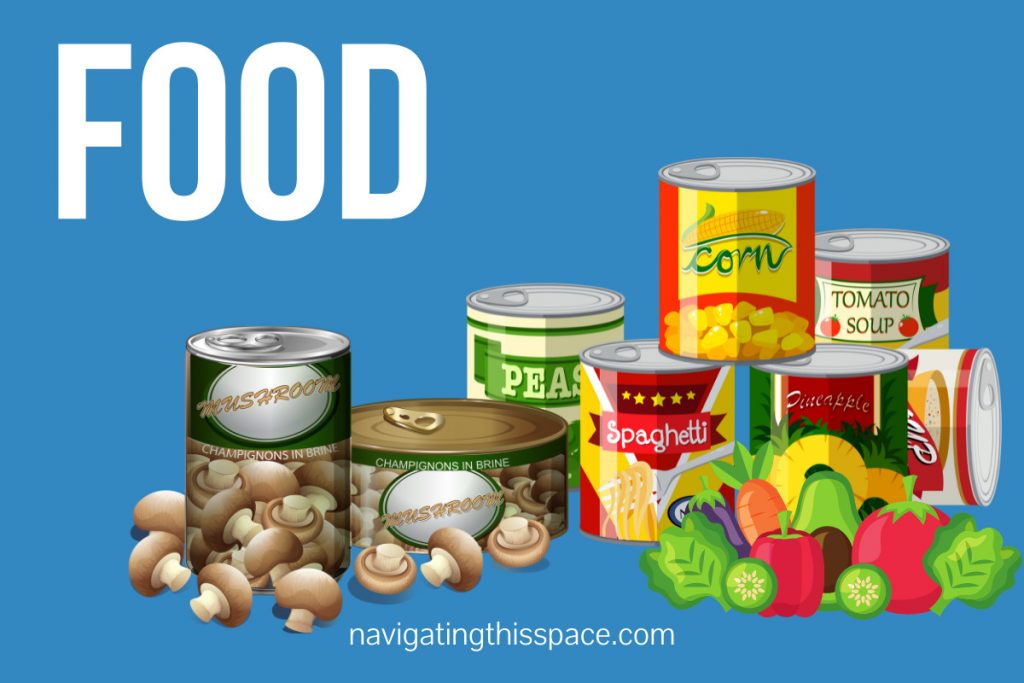
The next item on the list is food.
You will need food to survive because the body needs nourishment to function.
When choosing food for your kit, it is important to consider the shelf life and nutritional value of the food.
Canned goods are a good option because they have a long shelf life and can provide you with the nutrients you need.
You should also include high-energy foods, such as granola bars, dried fruit, peanut butter, and nuts.
It is also a good idea to include a camping stove and fuel in your kit to cook food if necessary.
There’s nothing like hot food to lift your spirits in a crisis!
First Aid Kit
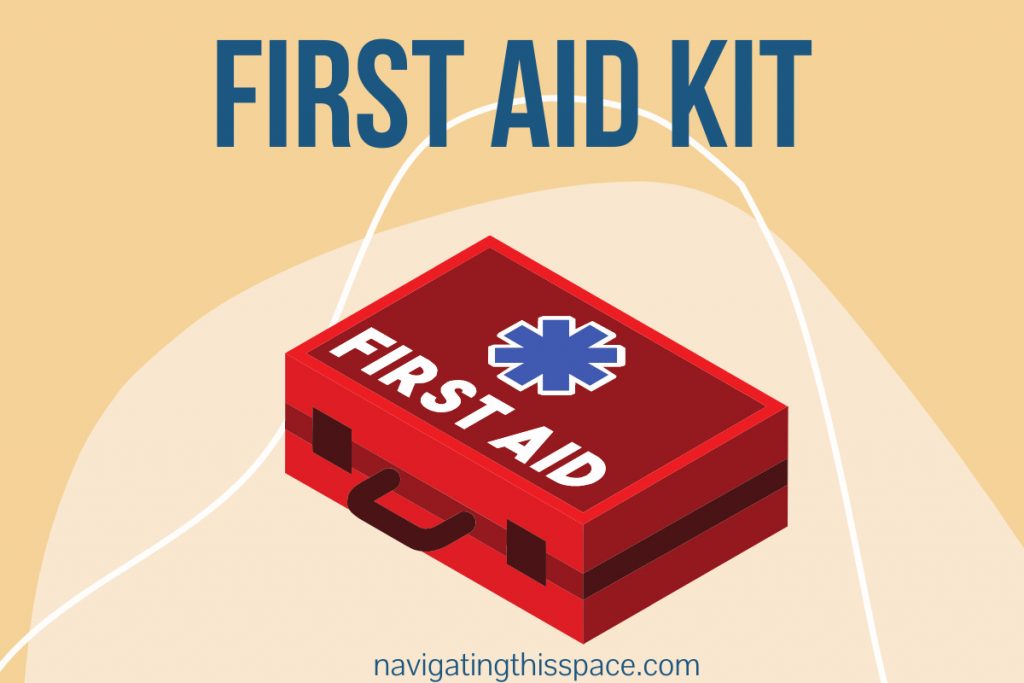
Another essential item for your emergency kit is a first aid kit.
A first aid kit can be used to treat minor injuries and illnesses and can also be used to provide comfort in a time of need.
Your first aid kit should include:
- bandages
- gauzes
- tweezers
- scissors
- antiseptic wipes
- pain relievers
- allergy medication
- any other vitamins and medications you or your family members take regularly
Shelter
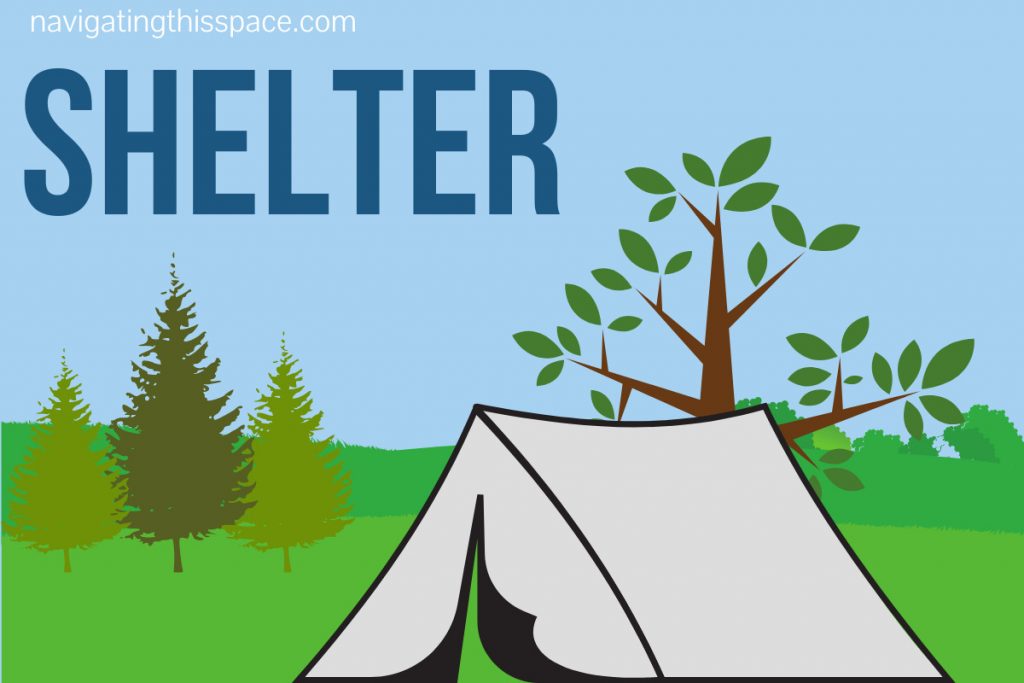
The next item on the list is shelter.
Having a shelter is important because it protects you from the elements and can help you stay warm or cool, depending on the time of year and your location.
A good option for shelter is a tent because it is lightweight and can be easily carried and set up.
If you live in a hot climate, you may want to consider insect repellant.
Recommended Article: How To Naturally Avoid Being Eaten Alive By Vampires — I mean Mosquitoes
Fire Starters
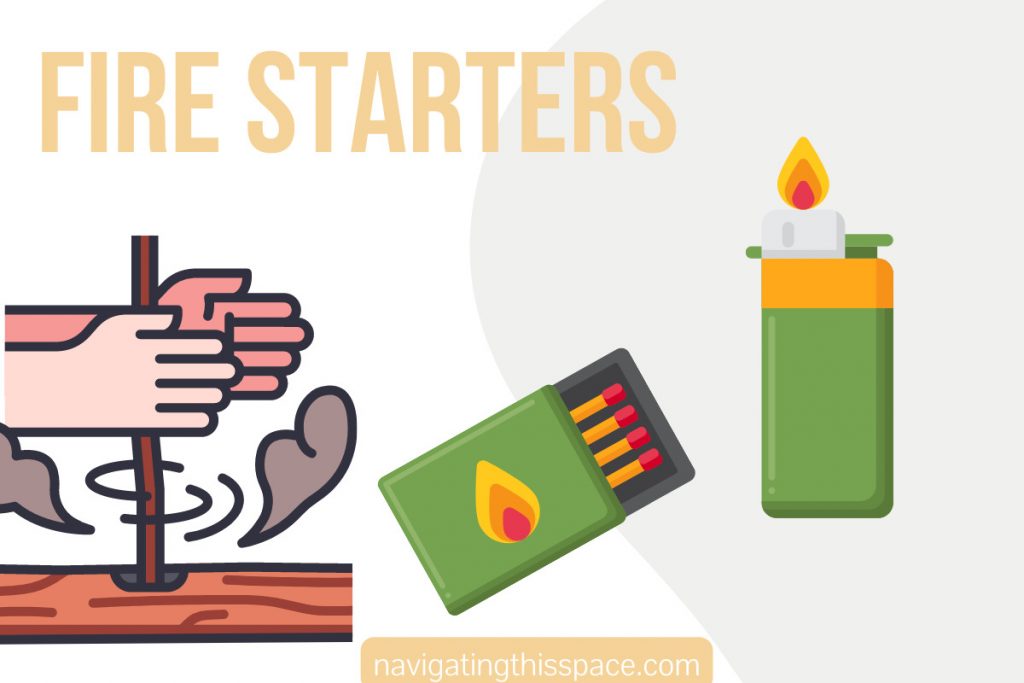
Lighter or matches and some kind of tinder, such as paper, dryer lint, or cotton balls, are a must-have.
You can use fire starters to light a campfire for warmth, cook food, or signal for help.
A flashlight is also a good source of light to include in your kit because it can be used as a signal for help and to see in the dark.
Extra Clothes

You should include at least two to three changes of clothes in your emergency kit because you never know when you might need them.
Be sure to choose clothing appropriate for the climate you live in and pack seasonally appropriate clothing if possible.
Hybrid clothing that can be used in hot and cold weather is the best option.
The clothing you pack should also be durable and easy to wash.
Hiking boots or comfortable shoes are also a good idea to include in your kit because you may have to walk long distances, and it’s best to do it in comfortable shoes.
Tools

Having the correct tools can mean the difference between life and death in an emergency.
Some of the essential tools you should include are:
- a knife
- a hatchet
- a multi-tool
- paracord
- whistle
- duct tape
- a flashlight
Toiletries
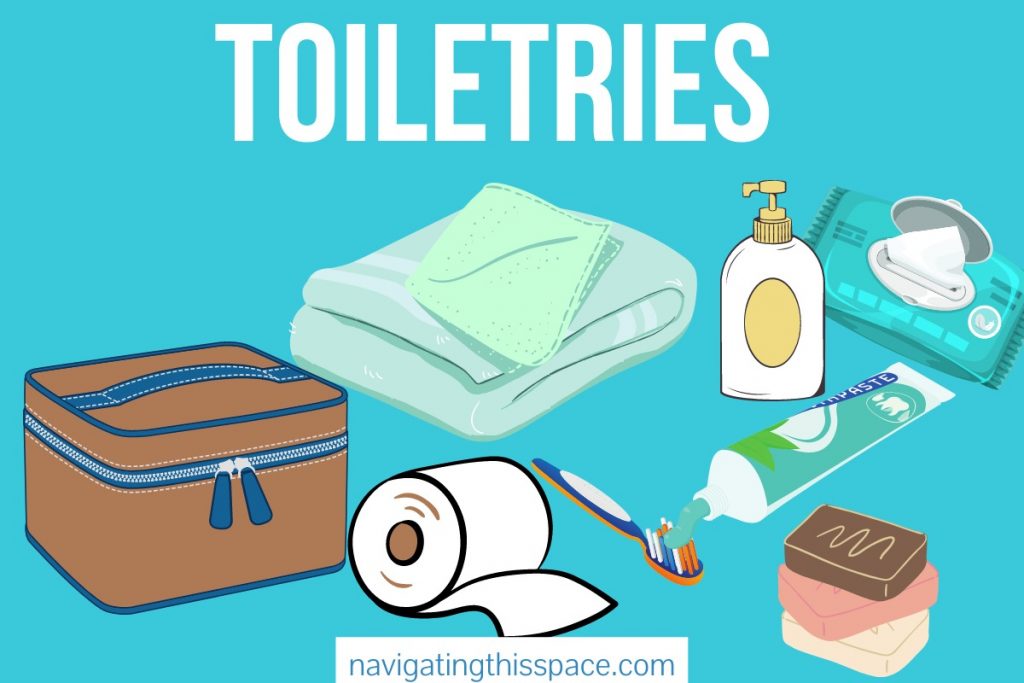
Last but not least, don’t forget to pack toiletries!
Toiletries are important for maintaining hygiene and preventing illness.
Basics, such as soap, toothpaste, toothbrush, a washrag, and a towel, should be included in your kit.
For women, it is also important to include feminine hygiene products.
You may also want to include toilet paper, wet wipes, and garbage bags.
Basics To Include in Your Disaster-Ready Kit

In addition to the previous list, Ready.gov, a website about disaster preparedness, recommends including the following basics in your disaster-ready kit.
The list includes:
- First aid kit
- Fire extinguisher
- Battery-powered radio
- Flashlight
- Batteries
- Sleeping bag or blankets
- Whistle
- Dust mask
- Plastic sheeting and duct tape
- Moist towelettes
- Wrench
- Manual can opener
- Local maps
- Cell Phone with chargers and a backup battery
Don’t Forget Your Identifications
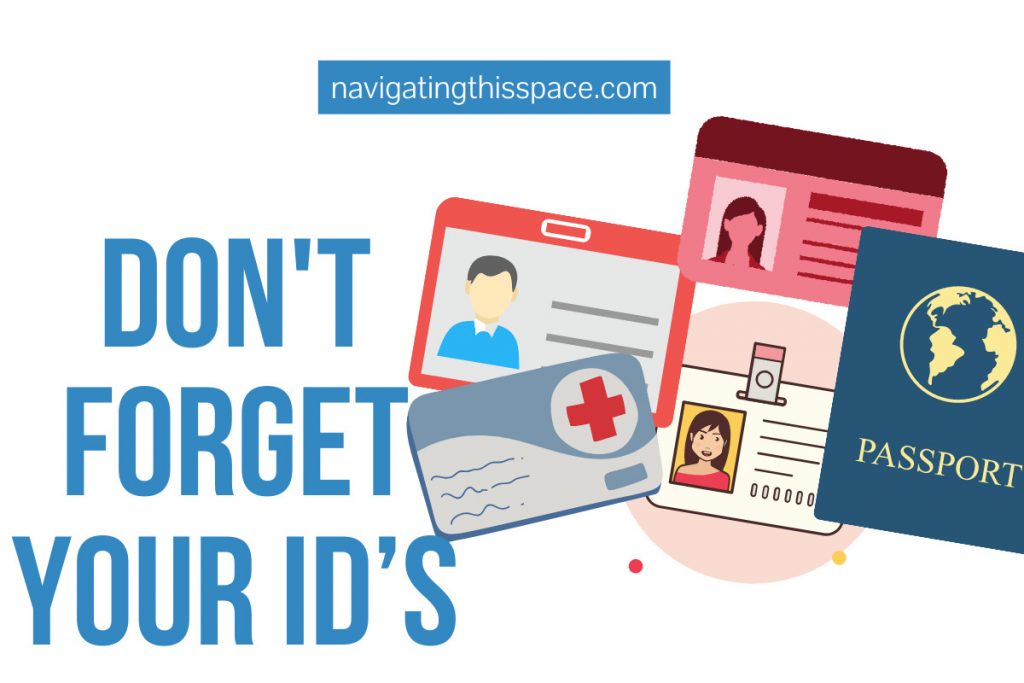
Storing identifications in your emergency survival kit is important if you become separated from your family or lose your belongings.
You should include copies of your driver’s license, passport, birth certificate, and social security card.
Having copies of these documents will help you get back on your feet if you lose your originals.
You may also want to include a list of Emergency Contacts, including names, addresses, and phone numbers of people you would want to be contacted in case of an emergency.
Where To Store Your Bag
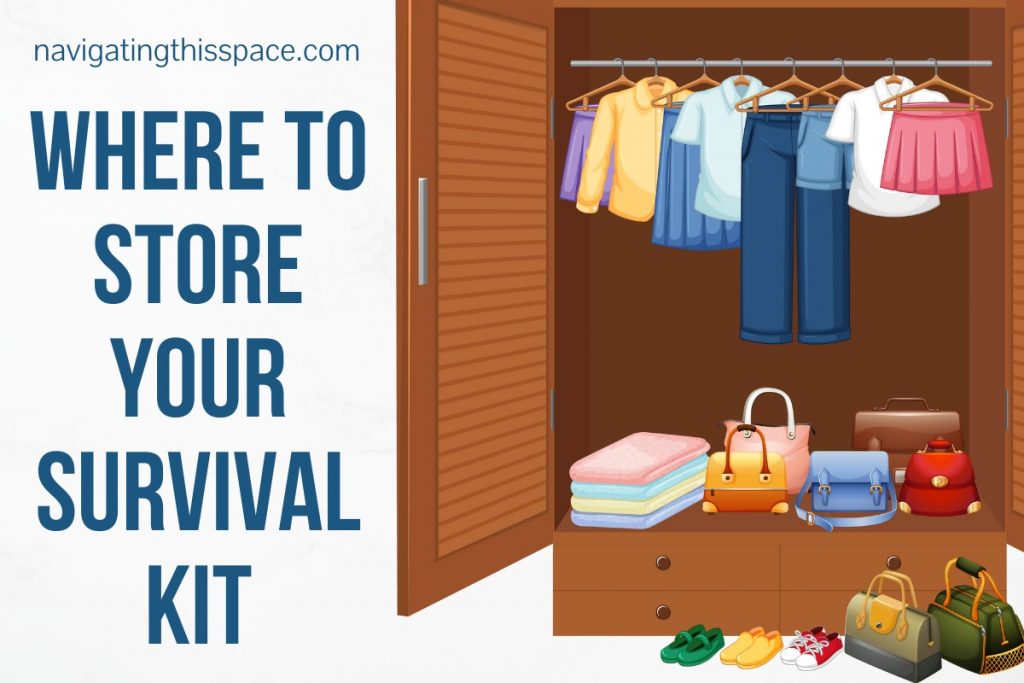
Now that you know what to include in your bug-out bag, you need to decide where to store it.
The best place to store your emergency kit is in a closet or other area of your home that is easily accessible, somewhere you won’t forget in a moment of panic. That could be in the closet beside your front door, so it’s an easy grab on the way out or in a bottom cupboard in your kitchen.
Where you store your bag is entirely your decision, as long as it’s in a place you can easily remember and access.
No matter where you store your emergency survival kit, be sure to check it regularly and update it as necessary.
This is especially important if you live in an area that is prone to natural disasters, such as hurricanes, earthquakes, or tornadoes.
What To Do If You Have To Evacuate in a Hurry
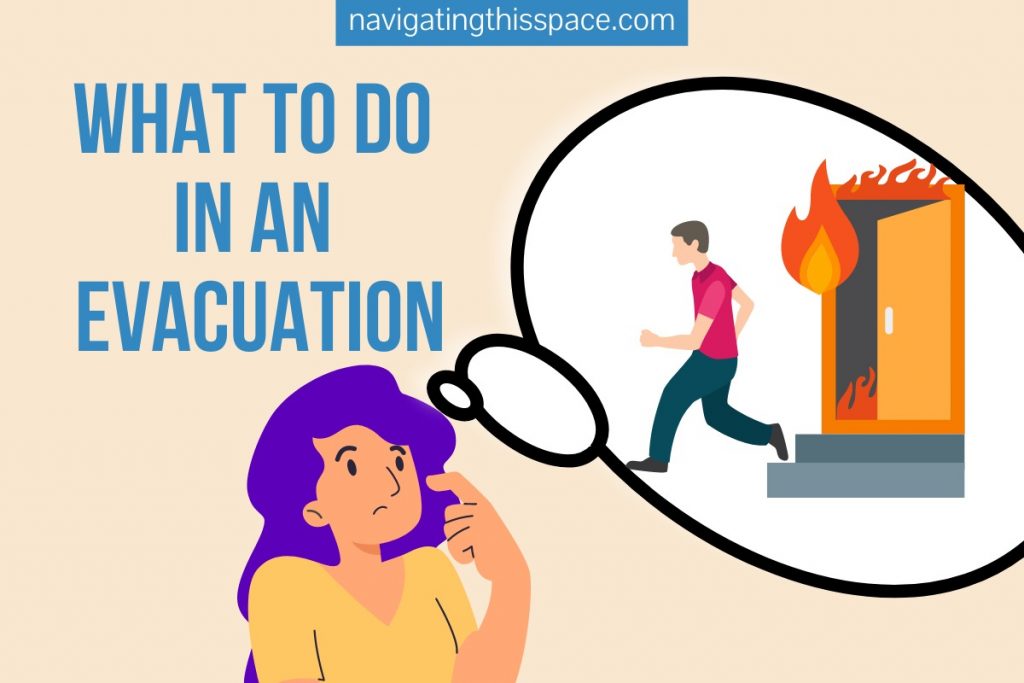
If you find yourself in a situation where you have to evacuate your home quickly, grab your bag and go.
Do not try to take anything else with you besides your emergency kit.
Leave everything else behind and focus on getting yourself and your family to safety.
Once you are in a safe location, you can assess the situation and decide what to do next.
If you have time, you can call your Emergency Contacts and let them know where you are and that you are safe.
In the event of a natural disaster, it is important to stay calm and follow the instructions of emergency personnel.
They will help you get to a safe location and provide you with further instructions.
The most important thing to remember is to stay calm and focus on getting yourself and your family to safety.
Tips for Staying Safe and Prepared in Any Situation

- The best way to stay safe and prepared in any situation is to have an emergency survival kit and a plan.
- Knowing what to do in any type of emergency can help you stay calm and focus on getting yourself and your family to safety.
- Making a plan ahead of time will help you be prepared for anything that may come your way.
- Staying calm will also help you think more clearly and make better decisions in an emergency.
Recommended Emergency Survival Kits

Ready America 72 Hour Emergency Kit
In an emergency, having the right supplies can mean the difference between life and death.
The Ready America 72-Hour Emergency Kit is designed to provide three days’ worth of supplies for one person, including food, water, first aid, a survival blanket, etc.
This affordable and compact kit is essential for anyone who wants to be prepared for the worst.
Don’t wait until it’s too late – order your Ready America 72-Hour Emergency Kit on Amazon today!

EVERLIT Emergency Survival Kit
If you’re looking for a comprehensive emergency survival kit, look no further than the EVERLIT Emergency Survival Kit.
This kit has been customized by US military veterans and designed to prepare you for any emergency or disaster.
It contains upgraded first aid supplies, water, food, essential survival gears, and safety protection equipment.
With an option of two or three people, this kit will ensure that you have everything you need to survive.
Don’t be caught unprepared – order your EVERLIT Emergency Survival Kit on Amazon today!
Never Get Caught Off Guard
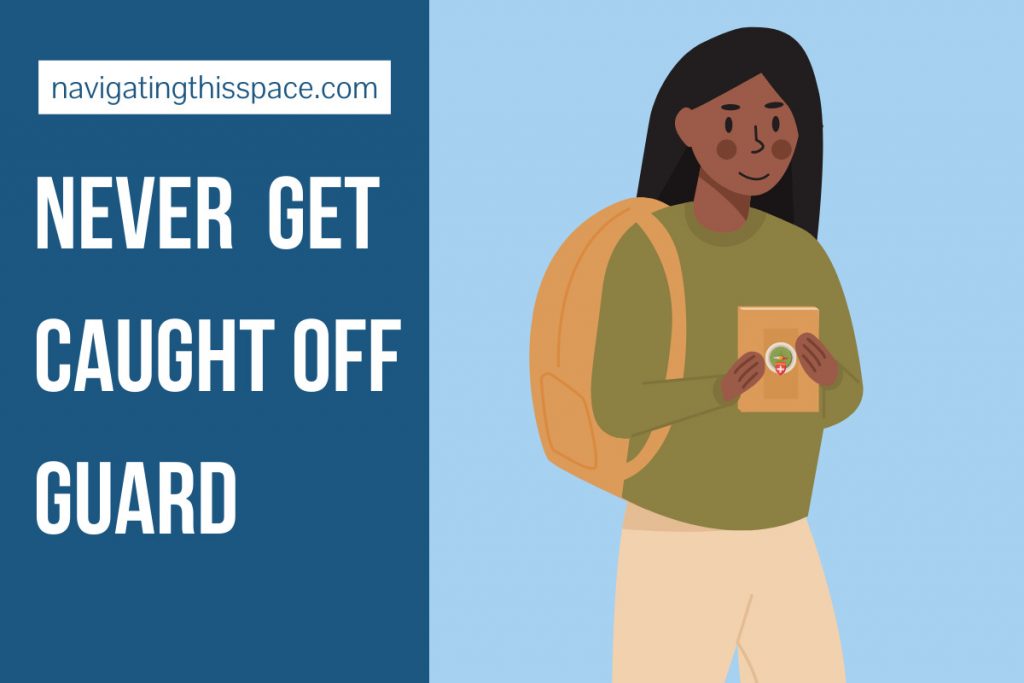
As you can see, there are many things you need to include in your emergency survival kit.
The most important thing is to make sure you have the essentials to survive in a time of need.
Be sure to pack these items carefully and keep them in an easily accessible place.
In an emergency, every second counts!
I hope this blog post has helped you understand everything there is to know about creating a bug-out bag.
What’s in your emergency survival kit? Share your thoughts and ideas in the comments below!
Please note: This blog post is for informational purposes only. It is not intended to serve as medical or emergency advice. If you are in an emergency, please call 911 or your local authorities for help. Be sure to always follow the instructions of emergency personnel. Thank you!
Questions You May Have
What should a survival kit include?
A survival kit is a collection of essential items necessary for surviving any emergency. While the specific items included in a kit will vary depending on the particular situation, these items should always be included: water, food, shelter, clothing, first aid supplies, and tools.
Why is it called bug-out bag?
A bug-out bag is a portable kit that contains everything you need to survive in the event of an emergency. The name comes from the fact that it allows you to quickly and easily “bug out” of a dangerous or difficult situation.
What are the 7 things you need for survival?
1. Shelter
2. Clothing
3. Fire
4. Food
5. Water
6. First Aid Supplies
7. Tools
Pin It!
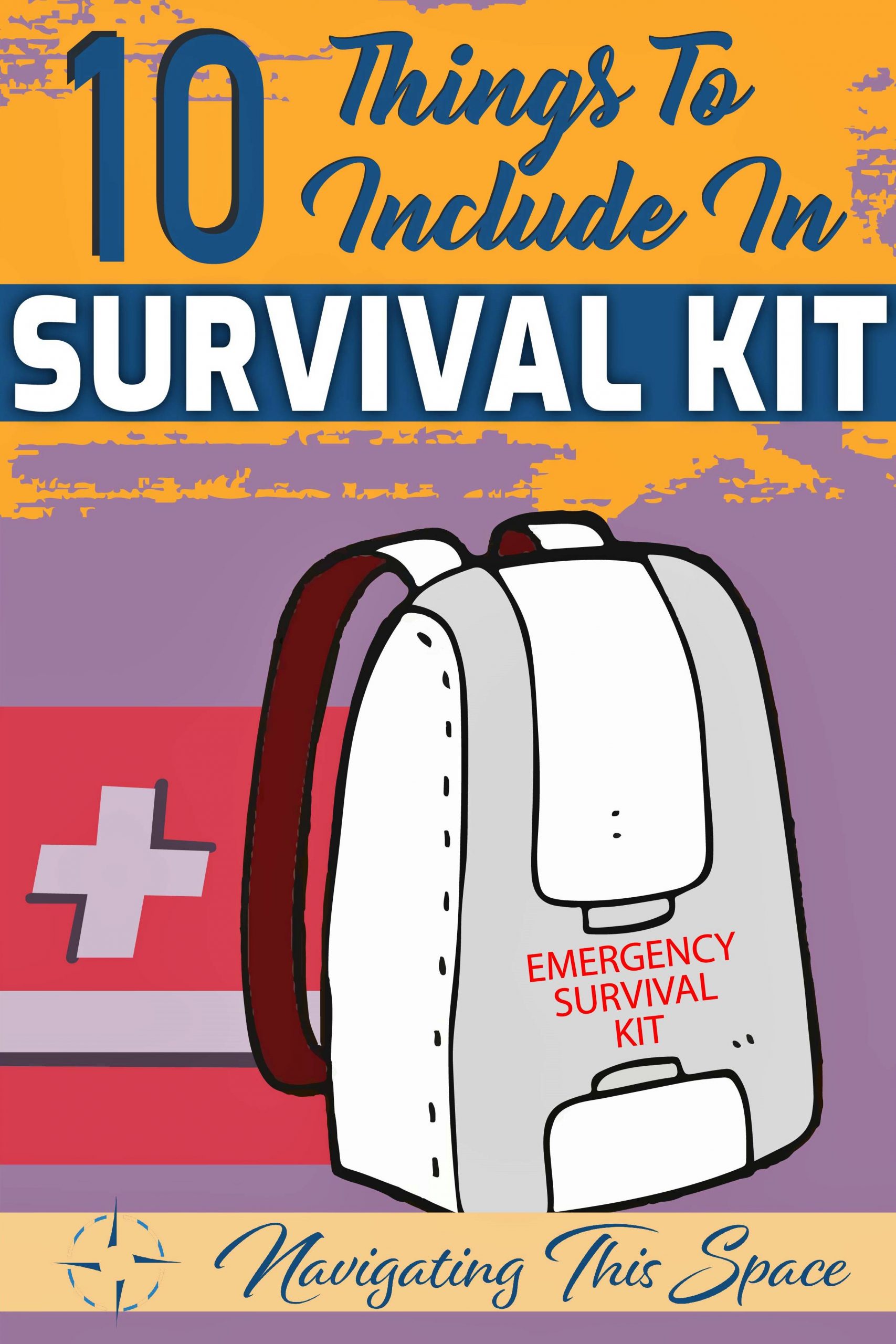
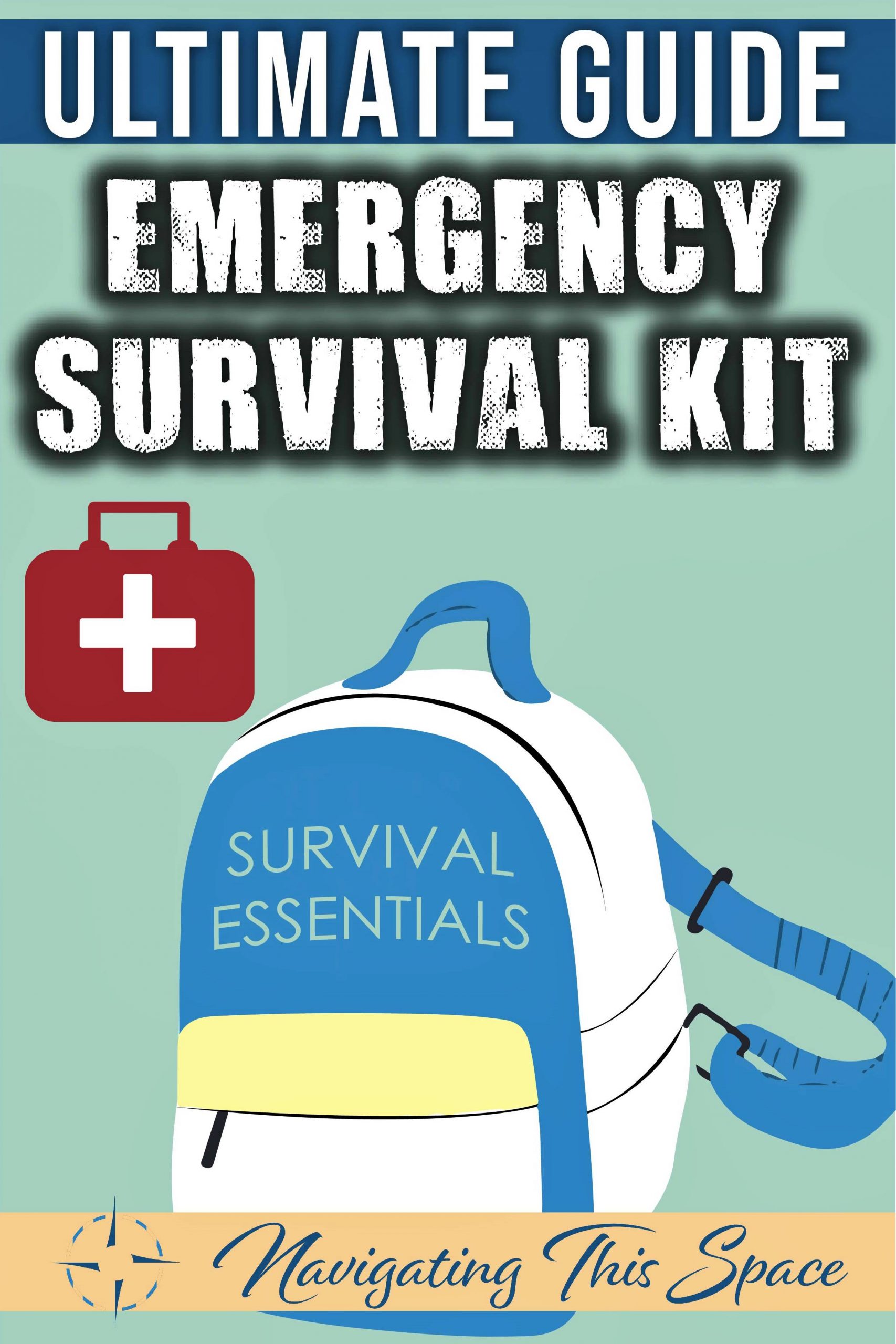
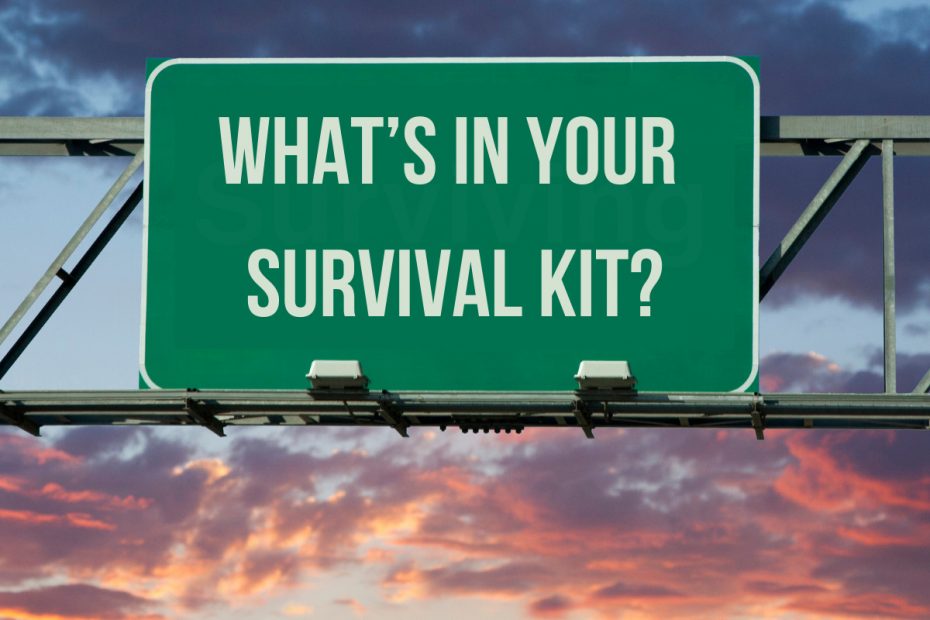





Love this! We are always looking for ideas to improve our own kit and have certainly picmed up a couple tips here. Thank you!
You’re very welcome Kathryn, thanks for reading!
This is a great list, you have included everything you could possibly need in this kit…
Better to be prepared Jeanine, thanks for reading and commenting.
Extremely detailed! Thanks for the article! From NoteHeather 😃
Happy to help Heather, thanks for reading!
Things are very crazy. Nobody knows what is coming next, so we better be prepared in case of an emergency situation. Thanks for this complete guide about an emergency survival kit.
I couldn’t agree more!